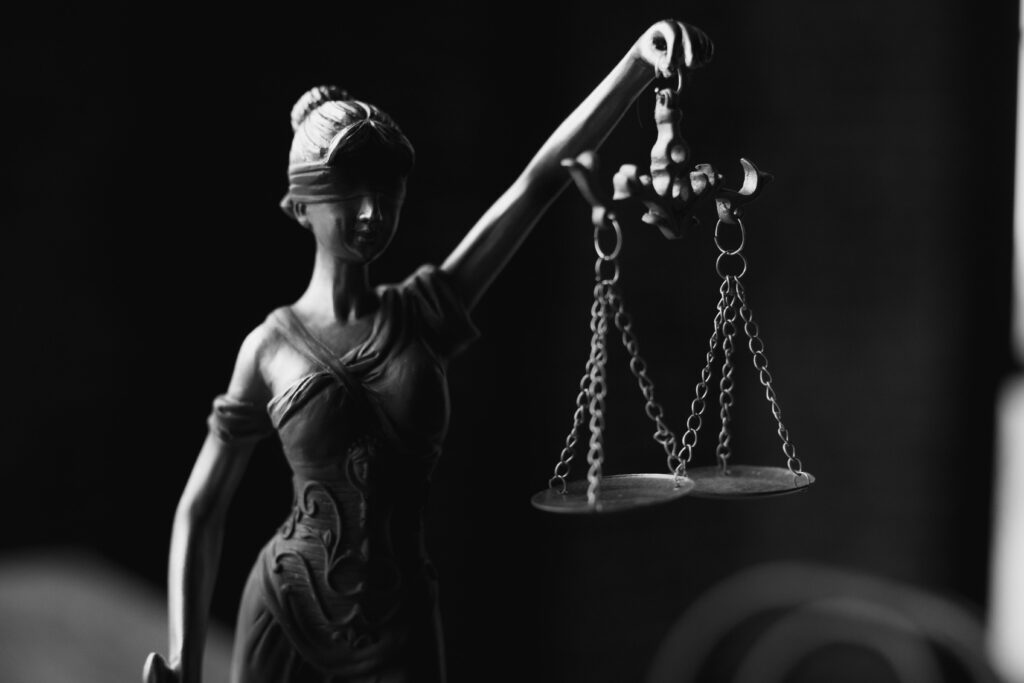Published On: October 11th 2025
Authored By: RAMAVATH RAJKUMAR
Pendekanti law college
Abstract
When we speak of women’s rights in India, especially in matters of marriage and property, we are not only discussing statutes and judgments but also centuries of lived experience. A daughter’s right in ancestral property may now be recognized under the Hindu Succession Amendment of 2005 — but in countless villages — women are still persuaded to ‘gift’ away their share to brothers in the name of family honor. Similarly, the right to maintenance under Section 125 of the Criminal Procedure Code often exists more on paper than in practice, because the enforcement machinery is weak and women are forced into endless litigation. This contradiction-between law and lived reality-is the true story of women’s rights in India
Introduction
When we talk about the rights of women we are talking about the struggle between old age customs and promise of a modern constitution . Woman in most familes has always been expected to sacrifice and adjust but when it’s comes to to questions of divorce maintenance and inheritance ,her role has too often treated ad secondary this imbalance is not just a social problem it is a legal one. Over the years our corts in cases of Danial latifi vs union of India explains that how even a divorced muslim woman cannot be left without fair financial support. While Vineeta sharm vs Rakesh Sharma reminded the country that daughters are as much as hiers as sobs. In reality many womens continue to fight long and exhausting battles just to secure basic Rights. This article is a heartfelt reflection on how laws often fail to protect woman in real life showing that true equality in india depends upon on making womans rights in marriage and property a lived reality not just a promise on paper
Evolution of Women’s Rights in Matrimonial and Property Dispute Matters
Pre-Independence Era
Under Hindu law, the two major schools, Mitakshara and Dayabhaga, prescribes inheritance and property rights. Mitakshara school recognized the concept of joint family property — but they barred women from copacenary rights limited to maintenance and stridhana — personal property. The Dayabhaga school allowed widows to inherit and share in husband’s property. Women’s Rights to Property Act — 1937 This Act granted limited rights to widows in their husband’s property. But, these rights were only life estates and did not amount to full ownership.
In Umayal Achi vs. Lakshmi Achi ( 1945 ) 7 FCR1 — 1945 — in this case — the court clarified that women’s interest is limited and restricted — can be returned back after her death. Post-Independence Classification The framers of Indian Constitution sought to balance personal laws with constitutional equality.
The Hindu Marriage Act, 1955, introduced the concept of divorce, judicial separation, and maintenance. This Act redefined the matrimonial rights for women.
Hindu Succession Act, 1956
Integrated Inheritance Laws It initially led gender disparities by excluding daughters from copacenary property. Judiciary made significant reforms. Gurbax Singh vs. Kartar kaur ,2002 In this case, the court clarified that women’s inheritance has a constitutional necessity. Eventually, the Hindu Succession Act, 2005 In Vineeta Sharma vs. Rakesh Sharma — AIR( 2020) SC ( 3717): In this case, the court stated that daughters have equal copacenary rights from birth irrespective of father’s death.
Muslim and Christian Personal Laws
Muslim women were primarily governed under Muslim Personal Law Shariat Application Act, 1937. This Act replaced the customary laws with Shariat-based rules — ultimately giving women’s inheritance rights as per Quran. In Danial Latifi vs. Union of IndiaAIR (2001) SC( 3958): The Supreme Court clarified that Muslim women is entitled to fair and reasonable provision beyond iddat period.
Similarly, the Christian women’s matrimonial rights were governed under Indian Christian Marriage Act 1872 and Indian Divorce Act 1869. In Ammini E.j. v. Union of India 1995, the court struck down gender discrimination in divorce provisions.
Rights of Women in Matrimonial Disputes
Marriage in India historically not seen merely a personal choice but it is a religious sacrament. Section 2 Maintenance Section 144 of Bharatiya Nagarik Suraksha Sanhita 2023 explains that a wife including divorced but unmarried minor children — disabled major children and dependent parents entitled to claim maintenance if neglected by a person who has a sufficient means.
Hindu Marriage Act 1955 Section 24 and 25 provide interim maintenance and permanent alimony. Muslim Women Protection of Rights and Divorce
Mohammed Ahmed Khan v. Shah Bano Begum AIR (1985) SC (945) The Supreme Court recognized Muslim women entitled to claim maintenance under Section 144 of B.N.S.S. demonstrating that personal law cannot disallow fundamental rights. Rights Against Domestic Violence The Protection of Women from Domestic Violence as 2005 expanded definition of violence over physical abuse including emotional — economic and verbal abuse. Women now can claim residence order, protection order and even monetary relief. Case Law Hiral P. Harsora v. Kusum Narottamdas Harsora 2016 In this case — the court struck down definition of respondent ensuring that women can seek protection not just from husband but also other relatives in shared household. For many women, abusive silence cannot be seen. Physical dependence and social dishonor often trap them in abusive relationships despite the law promising them to escape and protect them.
Sayara Bano vs Union of India, AIR ( 2017) SC ( 4609): The Supreme Court struck down instant triple talaq as it violating Article 14, as it manifested as arbitrary and discriminatory. The Supreme Court stated that practice of triple talaq deemed to be unconstitutional.
In Joseph Shine Vs. Union of India — AIR (2018) SUPREME COURT (4898): The Supreme Court struck down Section 497 of IPC, removing adultery as a criminal offense. The court held that it violated Articles 14 — 15 — 21 of Indian Constitution. The judgment recognized women’s dignity and sexual autonomy, rights of women in property disputes.
The Hindu women and coparcenary rights
In the Succession Act, 1966, initially excluded daughters from coparenaryrights. In 2005 amendment — provided daughters are also equal coparceners providing equal rights and liabilities as sons.
Vinita Sharma Vs. Rakesh Sharma — 2020: The Supreme Court held that daughters have coparcenary rights by birth itself, whether the father alive or dead. By 2005 amendment — women possess equal rights and liabilities.
CEDAW OBLIGATION
India signed to the Convention on Elimination of All Forms of Discrimination against Women.
The main objective to ensure gender justice. Article 12 and 16 mandates removal of discriminatory laws in family law.
But, Article 2 focuses on states obligated to eradicate discrimination. Whereas — Article 16 describes equality in marriage and family relations.
CONSTITUTIONAL GUARANTEE AND EQUALITY
Article 14, 15, and 16 of Indian Constitution guarantees equality before law and prohibits discrimination based on religion, race, caste, sex, etc.
Suggested Reforms
Equal Share in Ancestral Property Even though Supreme Court stated that daughters can be coparceners still many women face social pressure to give up share. A reform must ensure automatic registration of daughter’s name in property records without any litigation.
Court have started valuing the unpaid work of house makers. This must be codified as law into law and property divisions. A reform could mandate trained mediators in family courts to make process less terrifying and more sensitive towards women’s concerns.
Property and matrimonial rights vary under Hindu, Muslim, Christian, and other personal laws. To reduce inequality — there should be minimum maintenance. Property shares should be mentioned. A reform should create dedicated fast-track courts for matrimonial and property disputes. Many rural women doesn’t even know they have rights in property.
Reform should mandate panchayat-level awareness drives and free legal aid excluding for women in family disputes.
International Perspective & Comparative Analysis
India’s legal structure regarding matrimonial and maintenance rights is influenced by its distinct socio-cultural diversity. But — a comparison with international practices highlights both advancements and deficiencies. Numerous countries have updated their legislation to emphasize gender justice, prompt relief, and fair distribution of marital assets—areas where India continues to encounter difficulties.
United Kingdom – The “Needs and Sharing” Principle
In the United Kingdom, matrimonial law as outlined in the Matrimonial Causes Act of 1973 adopts a needs-based and sharing-oriented framework.
Judicial authorities take into account various factors such as income, earning potential, age, and contributions (which include both financial and non-financial aspects, like child care).
The principle of “equal division” of matrimonial assets is generally upheld, except in cases where compelling reasons exist to diverge from this norm (as illustrated in the White v. White case).
Spousal maintenance may be limited in duration to promote financial independence, yet sufficient support is guaranteed during the transition period.
Lesson for India: Indian judiciary seldom awards equal property division unless both parties are named on the title. Acknowledging unpaid domestic work as a valid economic contribution — similar to practices in the UK — could significantly empower Indian women following divorce.
Canada – Guidelines for Child and Spousal Support
Canada adheres to the Divorce Act of 1985, implementing distinct Child Support Guidelines and Spousal Support Advisory Guidelines.
The calculation of maintenance amounts typically employs income-based formulas, thereby minimizing subjective discrepancies in awards.
Judicial authorities promote mediation and settlement prior to litigation, facilitating a more expedited relief process.
Insight for India: Maintenance amounts as stipulated under Section 125 of the CrPC or personal laws exhibit significant variability due to reliance on judicial discretion. The establishment of standardized guidelines could enhance the predictability and fairness of relief
Muslim-Majority Nations – Contemporary Reforms
Certain Muslim-majority nations, such as Tunisia and Morocco, have updated their personal laws:
Tunisia’s Code of Personal Status guarantees shared responsibility between spouses and fair post-divorce settlements.
Morocco’s Moudawana (Family Code) clearly provides women with rights regarding property obtained during marriage.
Implication for India: It is possible to harmonize tradition with gender equality through progressive interpretation and legal reform, even within religious contexts.
Challenges in Implementation and Hidden Realities
Legal reforms concerning women’s rights in matrimonial and property disputes have been acknowledged in both legislation and courtrooms; however, the true journey commences only after the ink has dried. It is during the implementation phase that the promise frequently diminishes. Despite the existence of progressive laws such as the Hindu Succession (Amendment) Act, 2005, and the Protection of Women from Domestic Violence Act, 2005, the disparity between legal provisions and actual experiences remains pronounced.
Social Resistance to Equality
In numerous communities, the idea of women possessing equal rights to inherit property is still perceived as a threat to traditional family structures. Cultural narratives often suggest that daughters are “married off” with dowry — thereby rendering their claims to ancestral property unacceptable. This unspoken guideline leads women to hesitate in asserting their legal entitlements, as they fear potential disruption of family dynamics or the risk of social exclusion.
Procedural Delays and Court Backlogs
Even when a woman opts to seek legal recourse, she encounters numerous procedural obstacles. Family and civil courts in India are burdened with an excessive backlog of cases — resulting in protracted litigation that can span several years. This delay not only depletes financial resources but also saps emotional resilience, compelling many women to either settle for less or abandon their claims entirely. For women in rural areas — the trek to a courthouse represents a significant financial and logistical challenge — often necessitating travel over considerable distances and facing multiple adjournments.
Power Imbalance in Matrimonial Negotiations
Although divorce legislation stipulates provisions for maintenance and alimony, the negotiation process is often biased due to the husband’s superior financial status and societal influence. In numerous instances — women find themselves coerced into accepting inadequate settlements to evade lengthy disputes — particularly when children are involved. The apprehension of social stigma and the unpredictability of an extended trial can undermine a woman’s negotiating power, rendering the legal system’s assurance of equity a distant reality.
Concealed Discrimination in Legal Counsel
The level of legal literacy among women continues to be inadequate, and this vulnerability is frequently taken advantage of. Many women face discouragement from asserting their rights to property or maintenance from family members or even local legal practitioners — often justified by the notion of ‘family honour.’ In these situations — the obstacles are not solely legal but also psychological — it is crucial to empower women to recognize that their rights are indeed worth defending.
Challenges in Enforcement
Securing a favorable judgment is merely a portion of the overall struggle. The process of enforcing property division or maintenance orders presents its own set of challenges. It is not uncommon for the opposing party to fail to comply, particularly when property documentation is ambiguous or intentionally altered. The proceedings for recovery can extend over a lengthy period — resulting in prolonged uncertainty for women. In cases of marriage dissolution, the issue of maintenance non-payment arises frequently, with defaulters taking advantage of procedural gaps to avoid responsibility.
Intersection of Gender and Poverty
For women belonging to economically disadvantaged groups, the obstacles are intensified. The expenses associated with legal proceedings — reliance on male family members for transportation — and a limited understanding of their rights render access to justice an elusive aspiration. In rural regions, traditional customs frequently take precedence over statutory regulations, with local panchayats issuing rulings that favor male relatives, thereby marginalizing the legal rights of women.
Psychological Toll and Emotional Fatigue
In addition to legal and procedural challenges, there exists a significant emotional burden. Engaging in litigation concerning matrimonial and property disputes transcends mere legal documentation; it involves the disintegration of personal relationships. Women frequently experience emotional exhaustion, harassment, and, in certain instances, retaliatory violence. The absence of institutional psychological support exacerbates the predicament.
Lack of Coordination Between Agencies
Matrimonial conflicts often necessitate collaboration among police, family courts, women’s commissions, and revenue authorities. But — in practice — these entities typically operate independently — resulting in delays and confusion. In the absence of a cohesive system, women are compelled to navigate through various bureaucratic layers, each imposing its own procedural requirements.
Conclusion
When women stand before the law in matrimonial or property disputes, she is not just asking for charity, she is claiming what is rightfully hers. Court and society must recognize that her struggle is not about wealth but about respect and survival. A nation cannot call itself safe if daughters still plead for equality. Justice O’Law will be only real when every woman feels secure in her home and confident in her future
Bibliography
Statutes & Legislations
- Hindu Marriage Act, No. 25 of 1955 — INDIA CODE (1955).
- Hindu Succession Act, No. 30 of 1956 — INDIA CODE (1956).
- Hindu Succession (Amendment) Act, No. 39 of 2005 — INDIA CODE (2005).
- Muslim Personal Law (Shariat) Application Act, No. 26 of 1937 — INDIA CODE (1937).
- Muslim Women (Protection of Rights on Divorce) Act, No. 25 of 1986 — INDIA CODE (1986).
- Indian Divorce Act, No. 4 of 1869 — INDIA CODE (1869).
- Indian Christian Marriage Act, No. 15 of 1872 — INDIA CODE (1872).
- Protection of Women from Domestic Violence Act, No. 43 of 2005 — INDIA CODE (2005).
- Bharatiya Nagarik Suraksha Sanhita, No. 45 of 2023 — INDIA CODE (2023).
Case Laws
- Ammini E.J. v. Union of India, (1995) 1 S.C.C. 217 (India).
- Danial Latifi v. Union of India — A.I.R. 2001 S.C. 3958 (India).
- Gurbax Singh v. Kartar Kaur — (2002) 2 S.C.C. 611 (India).
- Hiral P. Harsora v. Kusum Narottamdas Harsora, (2016) 10 S.C.C. 165 (India).
- Joseph Shine v. Union of India — A.I.R. 2018 S.C. 4898 (India).
- Mohammed Ahmed Khan v. Shah Bano Begum — A.I.R. 1985 S.C. 945 (India).
- Sayara Bano v. Union of India — A.I.R. 2017 S.C. 4609 (India).
- Umayal Achi v. Lakshmi Achi — (1945) 7 F.C.R. 1 (India).
- Vineeta Sharma v. Rakesh Sharma — A.I.R. 2020 S.C. 3717 (India).
Foreign Case Laws
- White v. White — [2000] UKHL 54 (appeal taken from Eng.).




